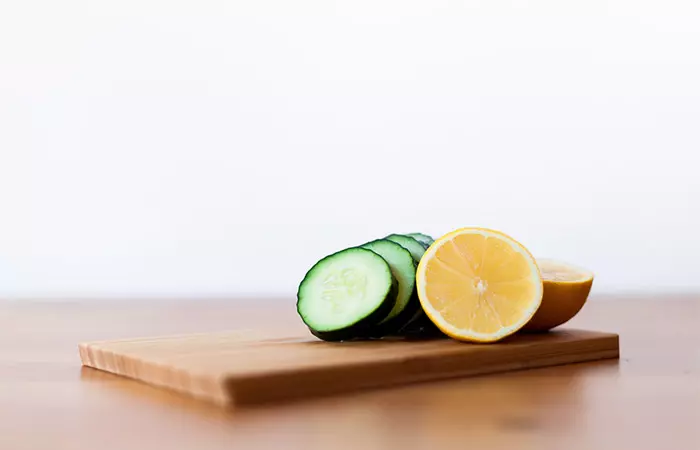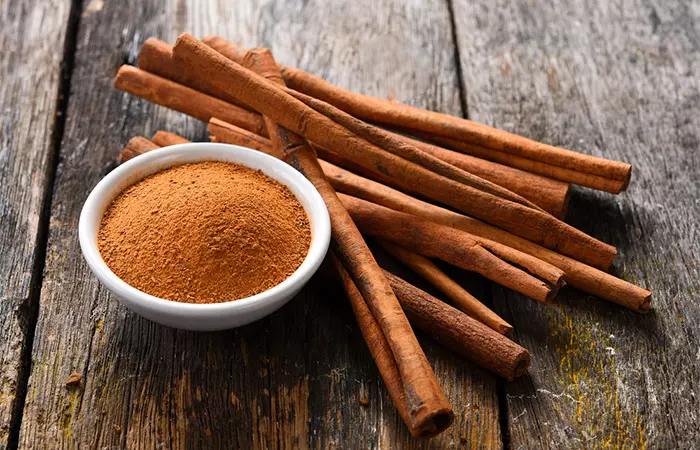What Is Hair Detox?
Hair detox involves cleansing your hair deeply with a readymade detox shampoo or natural remedies. It helps remove dirt, grime, and product build-up. This layer of gunk, if not removed, can keep your hair from receiving the benefits of an extensive hair care routine. A hair detox also makes your hair and scalp ready for other hair care treatments. Keep reading to further understand why you should detox your hair.
Why Should You Detox Your Hair?
As discussed, use of hair care products may lead to the build-up of dirt and oils in your hair. This may lead to hair thinning and hair loss and may also cause your hair to smell. Detoxifying your hair can help minimize these effects. It also may have these other benefits:
May help reduce dandruff and itchiness by cleaning the scalp. May boost absorption of hair care products, like oils, shampoos, conditioners, and hair packs. May promote healthy hair growth by removing the gunk and toxin build-up, as these may hinder the effective absorption of nutrients from hair care products/treatments.
This is how a hair detox can benefit your hair if followed in your regular beauty routine. But how do you do a detox? The following recipes can help.
Effective Hair Detox Recipes For Improved Hair Health
1. Bentonite Clay And Aloe
½ cup of bentonite clay powder ½ cup of pure aloe vera gel 4 tablespoons of regular apple cider vinegar 250 mL of diluted apple cider vinegar
Bentonite clay is used in many therapeutic applications for its detox and antibacterial properties (1), (2). It may slow down the growth of any harmful bacteria on the scalp. However, more scientific research is warranted in this regard. How Often? Once in two weeks
2. Baking Soda
½ cup of baking soda 3 cups of hot water
The warm water may lift your cuticles and allow some deep cleaning action. Anecdotal evidence suggests that baking soda can remove oil buildup and dandruff. How Often? Once a week Caution: Do a patch test before you try this remedy. Baking soda may cause scalp irritation.
3. Apple Cider Vinegar
¼ cup of apple cider vinegar 2 cups of water
Anecdotal evidence suggests that apple cider vinegar is a mild cleanser. It may help purify your hair. Diluted ACV ensures you do not develop any reaction to the otherwise acidic nature of concentrated ACV. Rabadger, a blogger, recounted her experience of detoxing her hair with apple cider vinegar to balance her scalp and get rid of any build-up due to hard water. She said, “Really nice results, since it’s a chemical change you don’t need much at all (i).” How Often? Once a week
4. Sea Salt Clarifying Shampoo
2 parts coarse sea salt 1 part shampoo
Sea salt is an effective exfoliant. It also improves skin hydration and helps refresh the skin and hair (3). This exfoliating salt and shampoo mix may help reduce dead skin cells and cleanses your hair. Once a month
5. Honey Shampoo
1 tablespoon of raw honey 3 tablespoons of filtered water
Honey is a humectant that keeps your hair soft and moisturized (4). It may also help cleanse hair deeply and promote detoxification. However, more research is warranted in this regard. How Often? Once or twice a week
6. Coconut Milk Shampoo
¼ cup of coconut milk ¼ cup of castile soap 2 capsules of vitamin E oil 15-20 drops of a fragrant essential oil (optional)
The castile soap exhibits an antimicrobial action (5). The essential oils used are also antimicrobial in nature (6). This shampoo may detox your hair deeply by reducing any infectious microbes on the scalp. Essential oils are packed with beneficial, volatile plant secondary metabolites that may help fight off infections and harmful microbes. A study found that tea tree, rosemary, and thyme essential oils are highly effective against Staphylococcus aureus. This bacteria, commonly known as staph, is associated with several infections. For further information, see the graph below.
Antibacterial Activity Of Essential Oils Against Staphylococcus aureus
How Often? Once or twice a week
7. Cucumber And Lemon
1 large lemon 1 medium-sized cucumber Essential oil (optional)
Lemon is a rich source of citric acid (7). Anecdotal evidence suggests that citric acid may clarify your scalp. The cucumber in this recipe may soothe your scalp. How Often? Once or twice a week
8. Shikakai
2 tablespoons of shikakai powder Water
Shikakai can relieve scalp scaling, itching, dryness, and greasiness (8). It may help cleanse your scalp if used regularly. How Often? Once or twice a week
9. Cinnamon Detox Mask
½ teaspoon of cinnamon 1 teaspoon of baking soda 2 tablespoons of olive oil
Cinnamon exhibits antifungal properties. It can effectively slow down the growth of Malassezia, a fungus that causes dandruff (9). Once a week
10. Coconut Milk And Aloe Shampoo
1 can of coconut milk ¾ cup of pure aloe vera gel Essential oil (optional)
Coconut oil promotes hair strength by reducing protein loss (10). It also may cleanse hair, though more research is warranted in this regard. Once a week In addition to the remedies listed above, you may also check out more homemade shampoo recipes that may help cleanse and detox your hair. While having a proper hair care routine is crucial, we can’t deny the role of diet and food in maintaining health. Keep reading to explore foods believed to detoxify your hair and scalp.
Foods That May Help Detox Your Hair
Topical applications can generate visible results if followed regularly. However, detoxifying your body promotes overall hair health too. Anecdotal evidence suggests that the following foods can help.
Cucumber Ginger Lemon Mint Watermelon Oranges Curry leaves Leafy vegetables Avocados Lean protein-rich foods
Additionally, hydration keeps the skin and scalp from drying. Maintain optimum hydration levels in the body by taking adequate amounts of fluids, including water. Detoxing can remove impurities and prep your scalp for other hair treatments. But can it also result in hair loss? Scroll down to find out.
Can Detoxing Cause Hair Loss?
Detoxing your hair with natural home remedies is a safe way to remove impurities and product buildup. This process does not typically lead to hair loss. However, anecdotal evidence suggests that excessive use of harsh ingredients like sea salt, lemon juice, and baking soda may cause dryness and damage. The remedies mentioned above can effectively clarify your hair without harm. However, follow up these treatments with proper conditioning and hydration to keep your hair healthy. If you experience excessive dryness or breakage, adjust your approach and consult a professional stylist for personalized guidance. You may need to detox your hair when you notice excessive buildup of product, dullness or lack of shine, and increased scalp irritation or itchiness. If your hair feels weighed down or lifeless, it might be time for a detox. Also, if you notice more hair breakage or difficulty in styling, a detox can help restore its health. When should you detox your hair? Detox your hair once a week if you have oily hair or use styling products consistently. If you have dry hair, detox it once every two weeks. What is the 30-day hair detox? The 30-day hair detox is a challenge that aims to remove gunk from your hair by not using any oils or styling products on your hair for 30 days. Can hair detoxification remove hair dye? No, natural detox remedies do not help remove the hair dye. It simply nourishes the strands without affecting the hair shaft and cuticles.
Illustration: Simple Home Remedies To Detox Your Hair
Give your hair a detox at home with this effective DIY hair rinse. Unlock the secret to gorgeous, strong, and healthy locks from this video.














